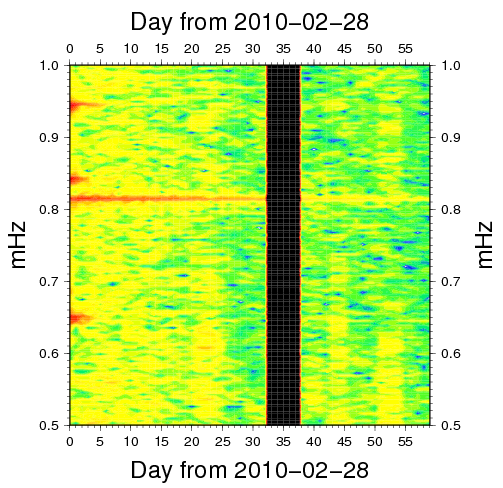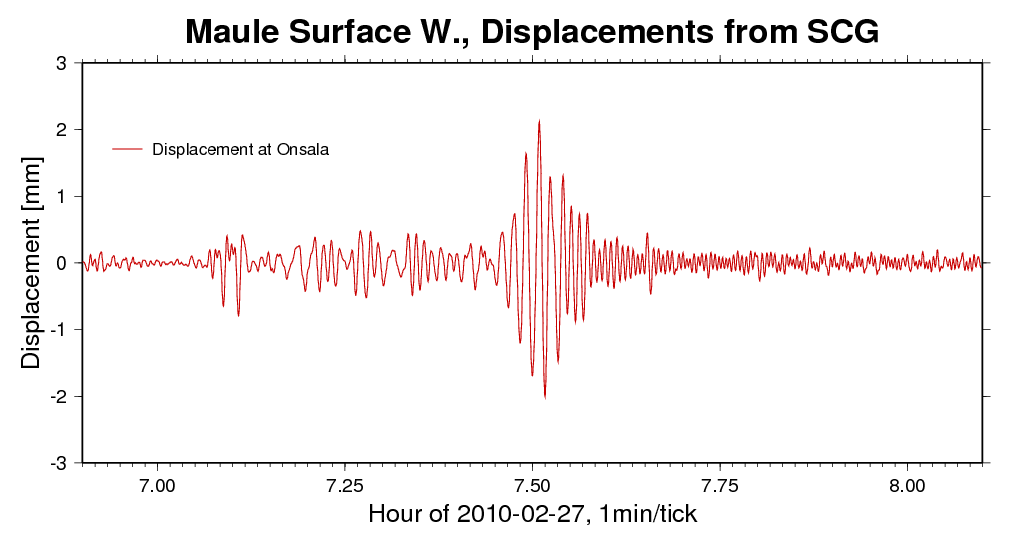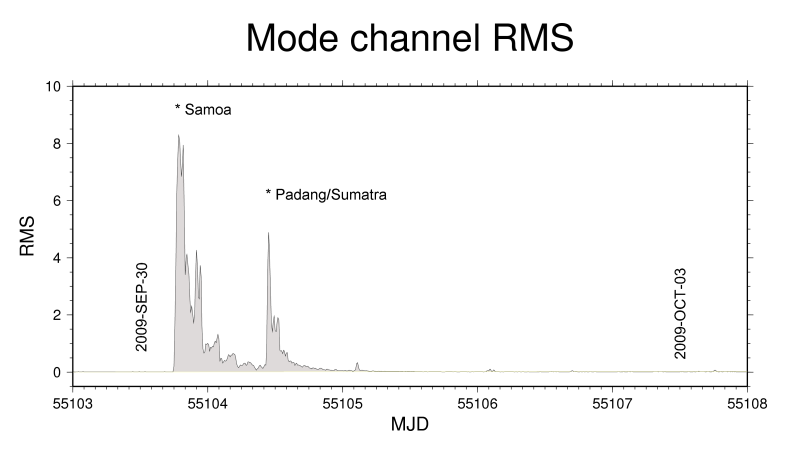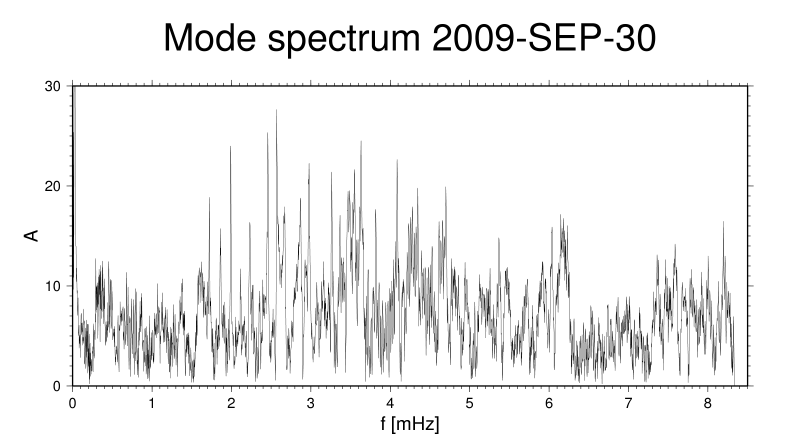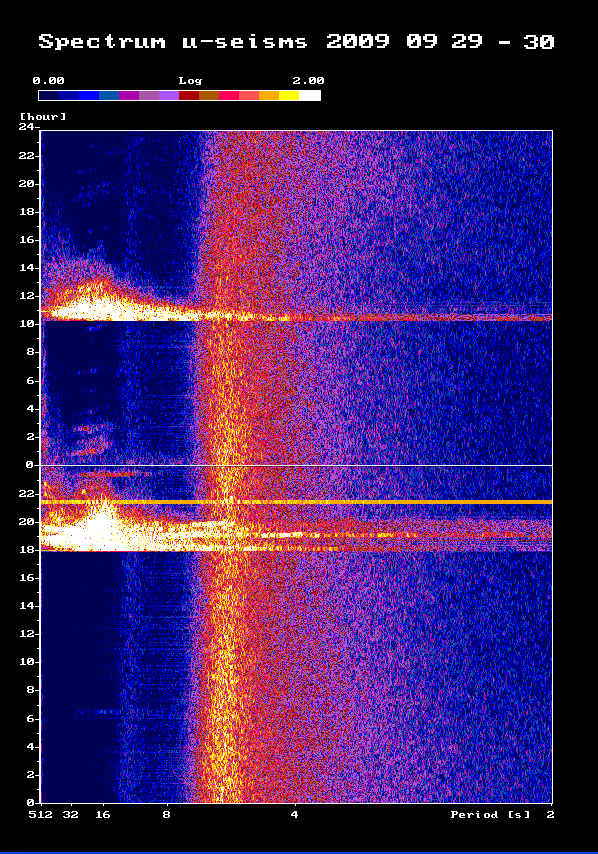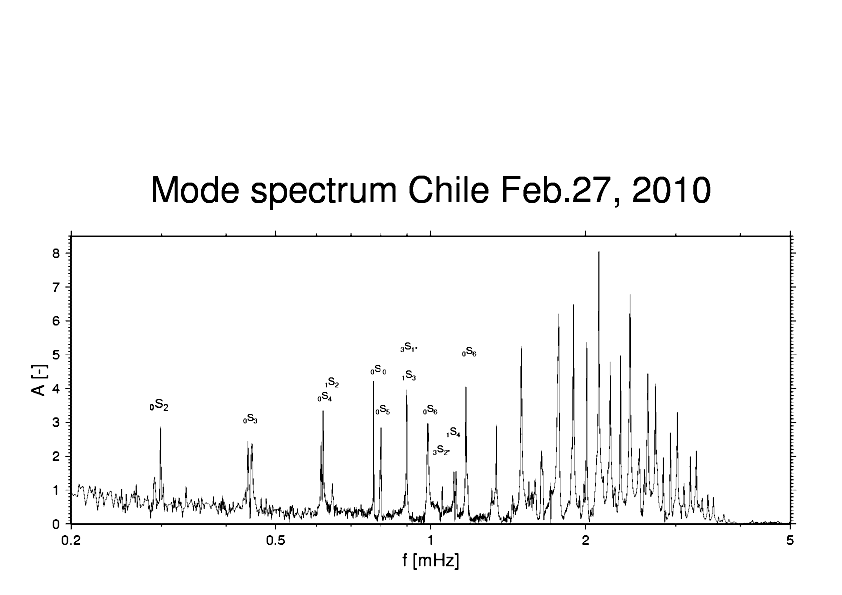
| The
mode symbols are to be interpreted as follows: S or T designate spheroidal or torsional deformation, respectively. Spheriodal modes are curl-free, and contain a sizable fraction of motion in the vertical. Thus, a gravimeter is a sensible instrument for their measurement. Toroidal modes would have no vertical component if the earth would not spin. However, the small accelerations that a mass particle experiences as it moves at right angle to the rotation vector produces a force that in general also has a vertical component (i.e. radially from the earth centre). This is commonly known as a Coriolis-effect. The subscript to the right of the T or S mode symbol expresses how many node lines there are encircling the earth, either parallel to each other or crossing at right-angle. This is like an oscillating membrane draped over a sphere. In each node line, deformation is zero; across the node line, deformation reverses its sign. The subsript to the left of the symbol expreses how many node surfaces there are in the interior of the earth. Again, deformation is zero on these surfaces. They are concentric like in an onion. |
